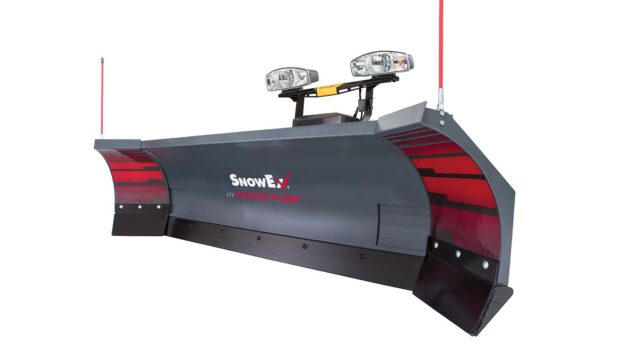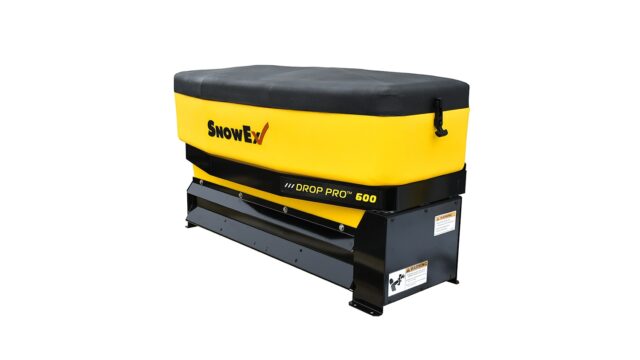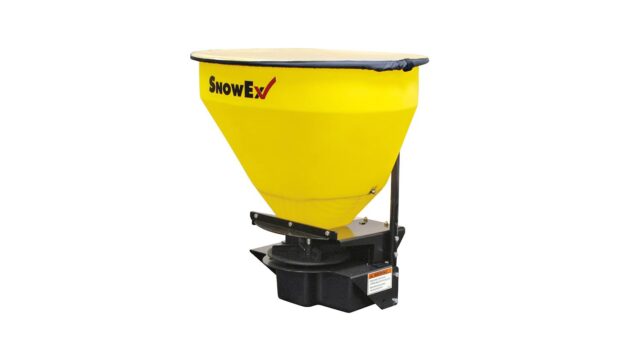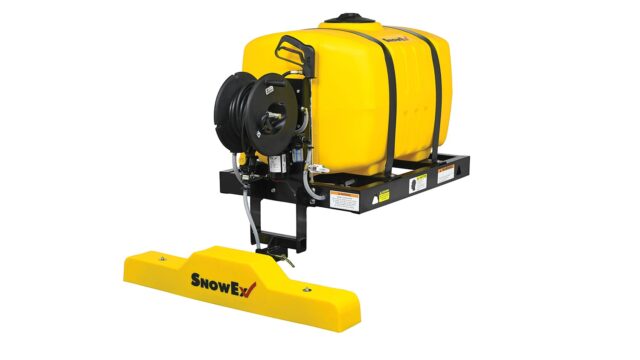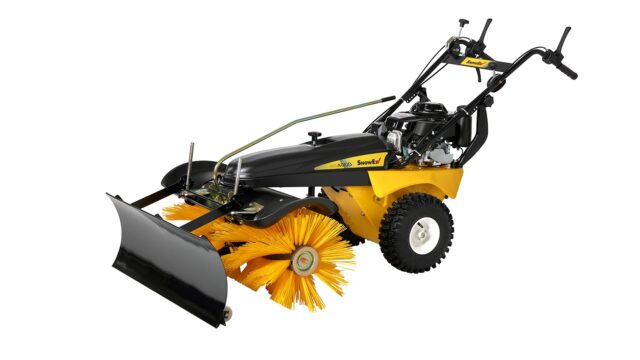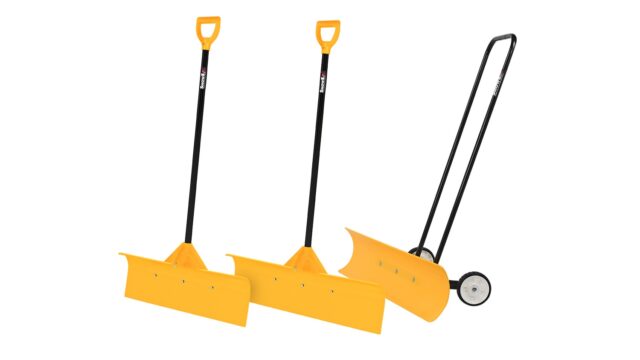FAQs & Misconceptions About Liquids
Created March 30, 2020

By Pam Buckley, Sustainability Manager, Douglas Dynamics
Brine Making
When the snow flies, I can’t waste time mixing cocktails.
Salt brine is made in advance of the storm and stored for use. It is not only much more effective to do it this way, but it is more efficient and costs less. As a rule of thumb, it is recommended to have enough in storage to service your accounts for 1.5 to 2 events.
How much should I dilute my salt brine when temperatures warm up?
Always make high quality salt brine (23.3 percent) and use it at that strength. Warmer temperatures require lower application rates, not a diluted concentration of the brine itself.
Property Owner/Client Contracts
Property owners won’t understand why I am applying material if it isn’t snowing.
Talk with your customers about liquid technologies, and demonstrate how they work and the benefits they can expect from using them. This will help establish you as an expert on the cutting edge of the technology and differentiate you from less knowledgeable competitors.
My contract pays me to use salt. Why would I go to liquids?
Other private sector snow and ice control professionals are using liquid deicers very successfully. As property owners observe the benefits of these methods, especially those who protect their property, demand for these products will continue to grow.
Deicer Performance
Liquids work too slowly, rock salt is faster and the use of liquids is too complicated.
Liquids actually work faster. When using any solid deicer, melting cannot occur until it turns into a brine. By starting out with a liquid there is no waiting for the brining process to occur, so it accelerates performance rather than slowing it down. In fact, no one has ever melted anything with any deicer chemical in the solid form. As with any tool, one must learn when and how to apply a liquid to maximize its benefits. Quality training shortens the learning time and pays for itself quickly.
Equipment – Nozzles
I tried the brown stuff, and it clogged up my nozzles. I can’t afford the hassle.
Correct, no one can afford “the hassle” during a storm event. Choosing the appropriate deicing materials for use in your equipment can prevent costly downtime and repairs. Many sticky, brown and viscous materials can clog your pumps, filters and nozzles. Be especially wary of well brine, some of which contains petroleum residues that can destroy plumbing. Clear brines and enhanced liquids specifically manufactured for use in winter application spray systems can deliver equal or better results without harming your equipment.
Liquid Deicer Use
Liquids will never be more cost effective and reliable as salt.
Salt brine is more efficient than solid material due to the increased product control during application and its versatility in use. Numerous studies have shown that, used appropriately, salt brine can expedite performance results, utilizing substantially less material and labor.
Liquids will never replace the proven practices of plowing and spreading salt.
Liquids are not intended to replace plowing and the spreading of salt in the solid form, but instead to enhance and supplement their performance. Liquids are another tool for the toolbox. Used appropriately, liquid deicers increase plow performance and reduce the time and amount of salt needed to achieve desired results when deicing.
Can I use liquids for everything?
No. They will not replace the plow, just as a plow cannot replace deicers. However, liquid deicer chemicals are the most versatile tool in the winter operations toolbox. They can be used before, during and after the storm event to inhibit snow and ice from bonding to the pavement and to penetrate and break that bond once formed. Liquids are used to anti-ice, pre-wet solids and to treat stockpiles.
Liquid Deicer Use & Weather Patterns
Where I live and work, there are too many rain-to-snow and snow-to-rain events that inhibit their effectiveness.
No matter what geographic area one lives in, if it snows there will always be circumstances for which liquids are the preferred protocol for the achievement of service objectives. Deicers (liquids, solids or pre-wet solids) are used according to their abilities with considerations to the current and expected weather conditions, not geographic location. Snow professionals in locations with weather patterns similar to yours have learned to use liquid strategies successfully by obtaining training on how and when to use them appropriately and by planning their use with reasonable expectations and specific goals in mind.
Return on Liquid Anti-icing Investment
It doesn’t snow enough here to justify the investment.
Return on investment (ROI) is dependent upon many factors, of which average annual snowfall and number and type of events are a few. In milder sections of the Snowbelt, liquids have actually proven to provide even more widespread value because they can be effectively used during the average storm event in place of salting. Comparatively, when conditions warrant the use of liquids, they provide a much higher rate of return than the use of solid materials. That said, service providers from all corners of the Snowbelt are realizing the benefits that liquid technologies provide and are using them profitably.
Safety & Liquid Deicer Use
You have to be nuts to spray liquids on pavement before it snows. It’s an accident waiting to happen.
It is the responsibility of highway agencies to provide safe driving surfaces and to prevent accidents. Studies nationwide have documented a significant reduction in accidents as a result of liquid anti-icing, which is driving the growth of this technology in both the public and private sectors. As with any tool, training, correct use and reasonable expectations are always key to success. Misuse of any tool does not make the tool bad. Ask any person who has hit their thumb with a hammer.
Climate Considerations for Salt Effectiveness
I hear all kinds of things about the different temperatures to consider when making decisions regarding appropriate snow and ice control strategies. What are the facts?
There are multiple temperatures associated with winter operations. Some are more important than others, and the terminology is often confused and misused. In order of importance:
Pavement Surface Temperature: The temperature of the surface being treated and where bonding occurs, regardless of whether or not there is snow and ice on it, is referred to as the Pavement Surface Temperature. This is ultimately where snow and ice control takes place, and is the primary data point for determining what ice control strategies and materials to employ.
Air Temperature: Changes in ambient air temperature are important to track throughout a storm event and factor into strategic decision making after Pavement Surface Temperature.
Download a PDF version of the article here.









